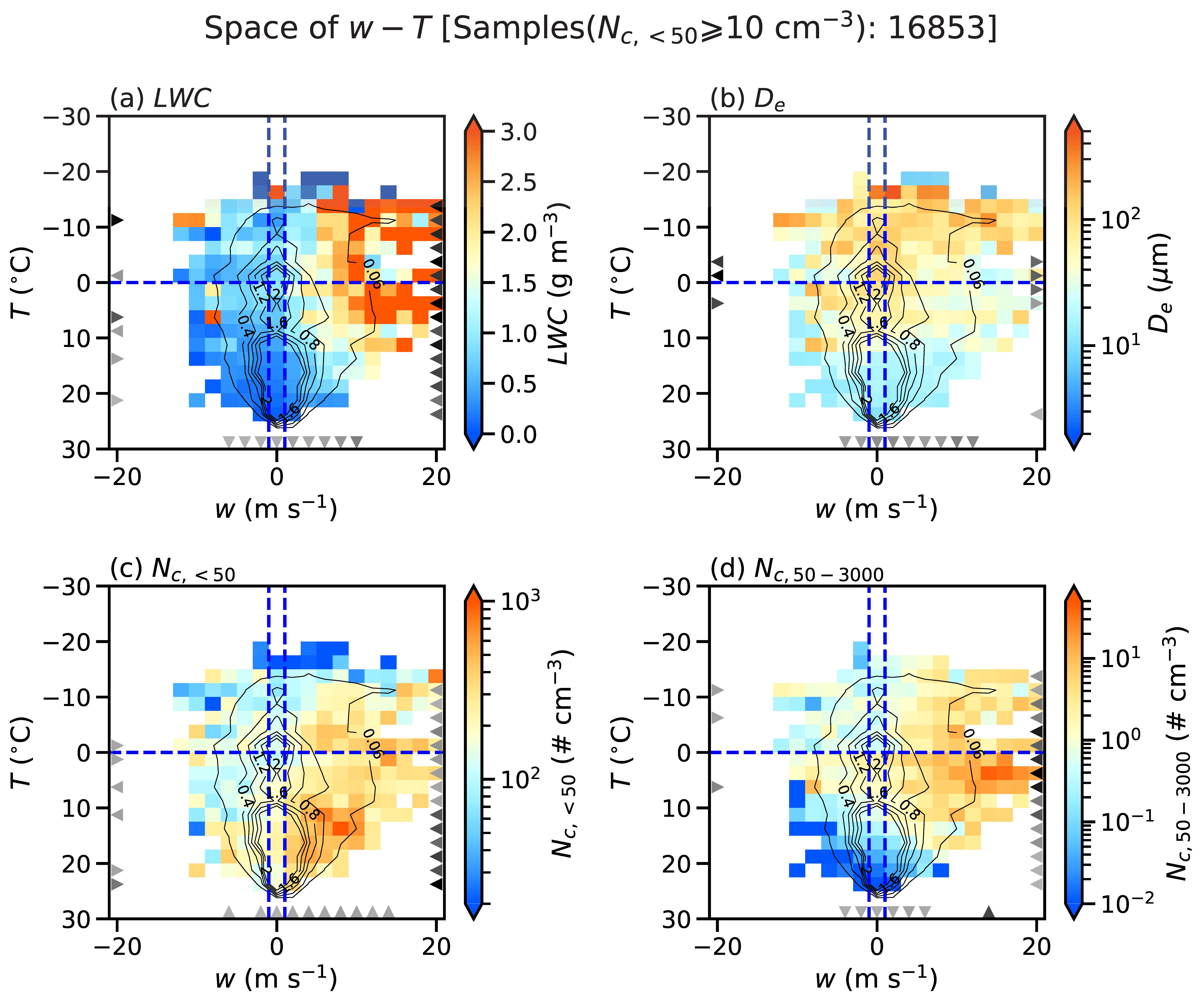Robust Dependence of Convective Cloud Microphysical Properties on Environmental Conditions
Submitter
Huang, Yongjie — University of Oklahoma
Area of Research
Cloud Distributions/Characterizations
Journal Reference
Huang Y, G McFarquhar, S Patil, L Gao, M Taszarek, M Xue, A Dzambo, M Wolde, L Nichman, C Nguyen, K Ranjbar, N Bliankinshtein, K Bala, P Kollias, M Jensen, Q Mo, R Bruintjes, C Kuang, and T Subba. 2025. "Dependence of Convective Cloud Microphysical Properties on Environmental Conditions during the TRACER and ESCAPE Field Campaigns: A Synergistic Approach of Observations, Machine Learning and Parcel Models." Journal of the Atmospheric Sciences, 10.1175/JAS-D-24-0269.1. ONLINE.
Science

Variation of cloud microphysical properties (a) cloud water content, (b) droplet effective diameter, number concentration for (c) Dmax < 50 μm and for (d) 50 μm ≤ Dmax ≤ 3000 μm in the vertical velocity (w)–temperature (T) parameter space (Fig. 5 in Huang et al. 2025).
This study combined new field observations, machine learning, and computer models to reveal how cloud microphysical properties change with their surrounding environment.
Impact
The results provide observational quantitative constraints that will improve physics in weather and climate models, reducing forecast uncertainties.
Summary
This study investigates how the microphysical properties of convective clouds vary under different meteorological and aerosol conditions. By combining unique observations from the TRACER and ESCAPE field campaigns with advanced machine learning and physics-based models, we obtained quantitative patterns linking cloud microphysics to key environmental factors. We also revealed the mechanisms by which warmer cloud bases tend to produce larger droplets, while polluted environments generate more numerous but smaller droplets. These findings provide robust observational constraints to improve the representation of convective clouds in weather and climate models, ultimately reducing forecast uncertainties. The study also demonstrates the power of integrating observations, machine learning, and numerical modeling to advance our understanding of cloud physics.
Keep up with the Atmospheric Observer
Updates on ARM news, events, and opportunities delivered to your inbox
ARM User Profile
ARM welcomes users from all institutions and nations. A free ARM user account is needed to access ARM data.


















